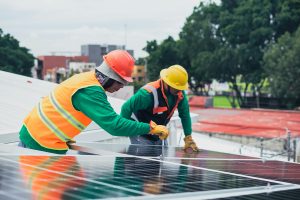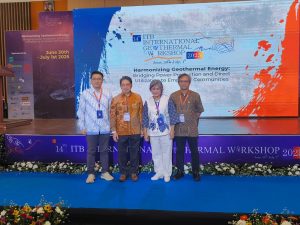Jakarta – At the ASEAN High-Level Dialogue held during the World Hydropower Congress (WHC) 2023, Minister of Energy and Mineral Resources (MEMR) Arifin Tasrif emphasised the urgency of electricity interconnectivity among ASEAN member countries.
Tasrif referred to Indonesia’s ASEAN 2023 chairmanship goal of sustainable energy through electricity interconnectivity. He highlighted the huge benefits that are expected to arise from such efforts. According to him, these benefits include improved system reliability, increased renewable energy penetration, and addressing the mismatch between demand and energy sources, making it essential to build electricity interconnectivity infrastructure in the ASEAN region.
The declaration produced at the 41st ASEAN Ministers on Energy Meeting (AMEM-41) sets an ambitious target that every ASEAN member state will be connected through the ASEAN Power Grid and Trans ASEAN Gas Pipeline by 2045.
Tasrif also emphasised the crucial role of the ASEAN Power Grid in facilitating the use of renewable energy, enhancing energy security, and accelerating the energy transition. Infrastructure development such as the ASEAN Power Grid will support efforts to face future energy challenges more efficiently.
A further agreement between the Brunei Darussalam – Indonesia – Malaysia – Philippines (BIMP) countries in the form of a Joint Statement was made concerning the Power Integration Project (PIP) in the BIMP subregion. This agreement reflects a shared vision to accelerate the energy transition and achieve sustainable energy security.
Super Grid Indonesia
Indonesia has plans to build a Super Grid, which will improve electricity connectivity between five major islands, namely Sumatra, Java, Kalimantan, Sulawesi, and Nusa Tenggara-Bali.
The goal is to optimise the utilisation of renewable energy sources and create a more reliable energy system across Indonesia. Hydroenergy, a form of renewable energy, has great potential to support sustainable energy security in Southeast Asia.
“The total potential of renewable energy in ASEAN reaches 17,229 Gigawatts, of which hydro potential reaches 261 GW,” Tasrif said.
In this regard, he emphasised the need for technological advances and improvements in project design and management to ensure that the development of renewable energy, including hydropower, is done in a way that is sustainable and has a positive impact on society. (Hartatik)













